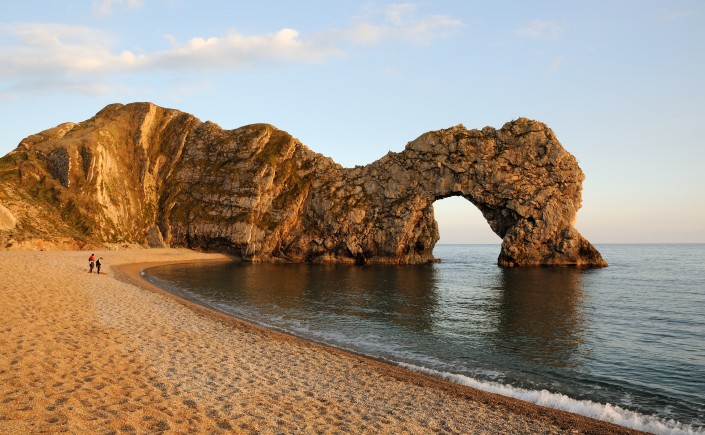When I ask my students what they particularly struggle with when it comes to exam preparation I frequently hear the exasperated reply: “case studies!”
Some of the geographers I teach, especially in years 10 and 11, feel overwhelmed when they reach the end of a topic (or an entire course) with the realisation that they have detailed notes on a plethora of case studies.
The number of case studies pupils are expected to learn will vary from board to board and topic to topic but there is no denying that they form an integral part of geography courses. So how do we, as teachers, help them learn and remember not only the general information but the all-important detail? Below are five very simple, tried and tested ideas.
- Choose case studies that are applicable to more than one theme in the specification
Before your students even embark on revision, you can help them remember case study information by carefully selecting those you teach. If a single case study can be used for at least two themes then that can make a real difference to pupil understanding, as well as making the overall number more manageable.
For example, the stretch of the Hampshire/Dorset coastline (from Portland Bill to Milford on Sea) can be used not only to exemplify landforms of erosion (Swanage Bay, Old Harry Rocks etc.) but also those of deposition (Hurst Castle Spit) as well as themes of ecology (salt marsh creation at Keyhaven Marshes) and coastal management (Christchurch Bay and Barton on Sea). Similarly for human geography, the Thai population policy can be used as an example of an anti-natalist approach to bring down birth rates (useful for population change themes) as well as a how the government is tackling the spread of HIV/AIDS (central to topics of health issues and development).
- A case study on one side
Condensing information onto one side of A4 or A3 is a really useful way of streamlining the case study and making it easier for a student to memorise. Writing out the notes forces the student to read (and hopefully process) the material which reinforces learning. Furthermore by writing out the case study they can see if there are any gaps in their notes or areas they don’t understand – both of which are vital when they are preparing for examinations.
Constructing mind maps on a sheet has the added advantage of encouraging students to see links between parts of the topic or indeed between topics (thereby identifying synoptic links which is particularly important at A2). Finally, a case study on one sheet is portable (ideal for revision on bus journeys) and is easily stuck on a bedroom wall.
- Be realistic
Some people are lucky enough to have photographic memories but most of us, unfortunately, do not. Whilst we always encourage students to learn detail (this is crucial to access the higher mark tier for most specifications) it is important to keep things in perspective. A student who tries to cram in too many facts and figures runs the risk of having a meltdown come exam time. I would say to most of my students to choose three to five key dates or figures to memorise for each case study. Obviously this will depend on the topic and level they’re working towards but when faced with panicking pupils I say some is better than none.
- Use images
Whether or not a particular student is a “visual learner” (a number of academics now think we should move on from the notion of learning styles), there is a lot to be said for linking visual stimuli with case studies. Whether it’s a geological map of the Dorset coastline to help remember the theory of bay and headland formation or a propaganda poster to reinforce the mechanisms of the Chinese One Child Policy, images can prompt memory and therefore be a strong tool in learning case study material. Some students may find drawing out a story-board helpful, while others may want to write notes around a central photograph or sketch.
- Mark up the specification
This is one of the most useful things I feel I can do as a teacher to help my students prepare for their exams and it is so simple. Take a copy of the specification and mark on exactly where each case study fits in. You can do this by hand or word process it as a table, but however you do it, your students will thank you for it: putting case studies into context is so helpful and their geographical knowledge will be enhanced by it.
You may want to give them a blank copy of the specification to do it for themselves but you should make sure that each student has a correct copy at the front of their notes when it comes to exam preparation. Choosing the right case study for the right question is absolutely crucial to success; if they don’t they can waste valuable time and marks by barking up the wrong (or less fruitful) tree.
Image: By Saffron Blaze (Own work) [CC BY-SA 3.0 (http://creativecommons.org/licenses/by-sa/3.0)], via Wikimedia Commons
 Rebecca Veals undertook her PGCE at the Institute of Education, and went on to her first job at Eltham College in London, where she spent four years. She is now Head of Geography at The King’s School, in Gloucester, a position which she has held since 2010.
Rebecca Veals undertook her PGCE at the Institute of Education, and went on to her first job at Eltham College in London, where she spent four years. She is now Head of Geography at The King’s School, in Gloucester, a position which she has held since 2010.

[…] https://educationblog.oup.com/secondary/geography/5-ways-to-help-students-remember-those-case-studie… […]